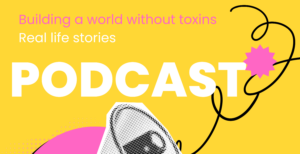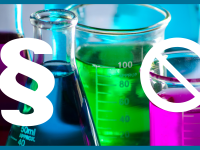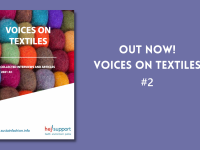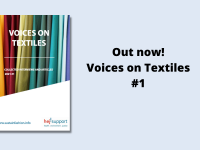Why and How Should Per- and Polyfluoroalkyl substances (PFAS) Be Regulated in Textiles?

The damages caused by per- and polyfluoroalkyl substances (PFAS) in the environment have been scientifically proven. These extremely persistent and toxic chemicals remain permanently in the environment and lead to the contamination of water, air, soil and ultimately the food chain. Globally, half of these chemicals are used in textiles due to their advantageous qualities, such as providing textiles with water-repellency.1 This means that textiles are one of the main sources of pollution related to the discharge and emission of PFAS. If safer alternatives have to be found to replace these hazardous chemicals to be able to continue to produce similar desirable qualities in textiles, there must also be a strong consideration of the ban of PFAS in order to limit their harmful effects.
The problem lies in that PFAS are a very diverse group of chemicals. Some are already forbidden under the Stockholm Convention on Persistent Organic Pollutants. This Convention bans the most hazardous chemicals agreed upon by the international community. In the case of PFAS, Parties to the Convention agreed to list perfluoroctane sulfonic acid (PFOS), its salts and perfluorooctane sulfonyl fluoride (PFOSF) as well as perfluorooctanoic acid (PFOA), its salts, and PFOA-related compounds into the Convention. This means that these chemicals will have to be restricted and/or banned by all Parties to the Convention. Additionally, the manufacture and use of some PFAS have been restricted under the REACH Regulation of the European Union.2
Furthermore on the matter, in 2019 the European Commission developed Elements for an EU-strategy for PFAS that “calls for Europe to eliminate all uses of PFAS that are not “essential” and to approach the chemicals as a group rather than individually“. At first, this can be seen as a good initiative because it is addressing the need and calling for a global ban on all PFAS. However, the issue remains unclear with regards to how the European Commision proposes to define, classify and determine which PFAS will be considered “essential” or not.
In the following year in 2020, the European Commission published a report which proposed for the ban to first address consumer apparel as well as home textiles.3 For these particular products, a relatively short transition period of around two years can be targeted for implementation of the ban. At the same time for leather products such as “professional apparel and technical textiles[,] longer transition periods of at least 4 years may be appropriate”.
In the meantime, consumers can rely on sustainability initiatives to help make better choices, such as the Global Organic Textile Standard (GOTS) or the EU Ecolabel, which have forbidden the use of PFAS4. For industry players, applying for certification under these initiatives requires the responsible PFAS-free production of the applicable products and, if deemed successful, these certified products can allow such companies and brands to be a positive contributor and role model for the industry and for the consumer population.
References
1. For more information see our article on PFAS: https://sustainfashion.info/the-use-of-perfluoroalkyl-and-polyfluoroalkyl-substances-pfas-in-textiles/
2. Perfluoroalkyl chemicals (PFAS) – ECHA (europa.eu)
4. For more information: https://global-standard.org/images/resource-library/documents/standard-and-manual/gots_version_6_0_en1.pdf






